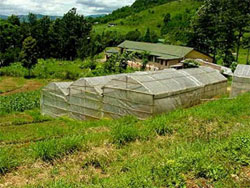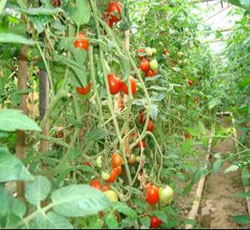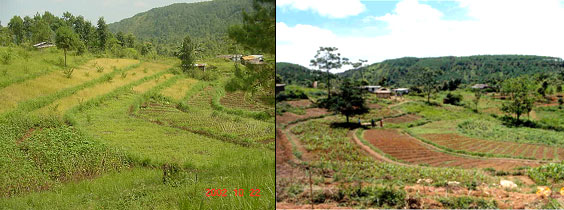Water Harvesting in Plastic Lined Pond
Lining material: minimum 250 µ thick black coloured LDPE film
Joining of LDPE film: bitumen of 85/25 and 80/100 grade mixed in the ratio of 2:1
Overlapping of film at joints: 30 cm
Expected life: 12–15 years
Covering over the film: minimum 15 cm thick soil layer
Boulder pitching over soil cover is optional
Cost of water stored: Rs. 50 per m3
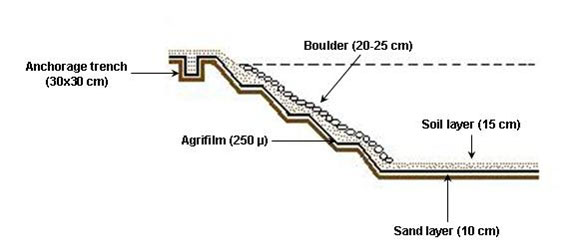
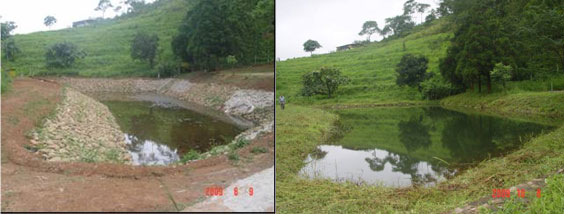
Slow Conversion Bench Terrace
Contour hedgerow technology provides and option for farming on hillslopes on a sustainable basis. The hedgerows are established by planting of fast-growing and deep rooting leguminous trees or shrubs such, as Leucaena leucocephala, Gliricidia sepium, Erythrina sp. etc along the contours on a hill slope. The spacing (vertical interval) of the hedgerows may be decided as per the land slope. However, in the region vertical interval between the hedgerows may be taken as 1.0–1.5 m. Crops are planted between hedgerows. Accumulation of organic matters through leaf litter of hedgerow species improves the water holding capacity and other physical properties of the soils. Cajanus cajan, Crotalaria tetragona, Desmodium rensonii, Flemingia macrophylla and Indigofera tincotoria are some of the hedgerow species for the region. Regular pruning of nitrogen fixing hedgerow species added 20–80, 3–14 and 8–38 kg ha–1 yr–1 of nitrogen, phosphorous and potassium, respectively. The hedgerow also helps in progressive development of terraces through accumulation of up slope hedgerow and stabilization of risers against rain storms by stems and roots. Among perennial grasses legumes–Stylosanthus guyamensis, Shameta, thin nappier and Seteria sphaculata with yield potential of 19.7, 19.0, 65.05 and 80.86 t ha–1 of green fodder may be planted on bunds and terrace risers.
